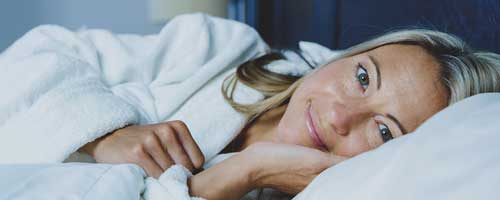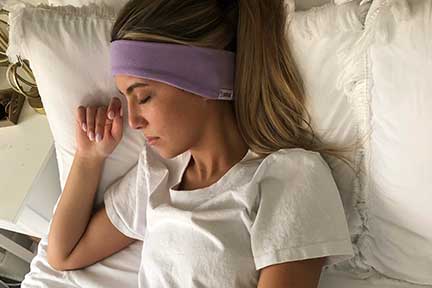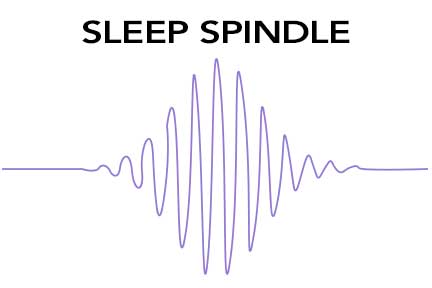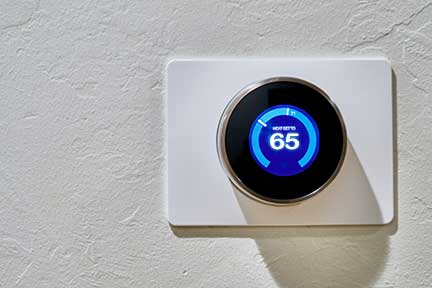How to Sleep Better as a Light Sleeper

Just about any unexpected noise, light, or touch can be an issue for a light sleeper. Whether it's the sudden glow from a passing car's headlines or the droning of your neighbor's music, know that there are steps you can take and solutions you can try to ensure a restful night. Some of these countermeasures may even help shift workers contend with midday commotion.
If you're wondering how to stop being a light sleeper, AcousticSheep®, maker of SleepPhones®, has a variety of actionable tips and tools that may help you catch the z's you need. We'll also discuss what a light sleeper is, how to know if you are one, and what you can do to sleep better.
Medical Disclaimer: The content on this page is strictly for educational purposes. You should not regard it as medical advice. Always consult your doctor before taking any new medication, changing your current dosage, or making other significant lifestyle changes.
What is a Light Sleeper?

A light sleeper is a person who wakes up in response to minor disturbances such as faint noise, dim light, or a partner moving in bed. Individuals dealing with this issue may wake up multiple times during the night and feel unrested in the morning. In contrast, a heavy sleeper (deep sleeper) can sleep through a significant amount of stimulus.
Researchers are still trying to determine all the reasons why people respond to disturbances differently. While lifestyle choices, genetics, and undiagnosed sleep disorders are key contributors, what's becoming more apparent is that some brains are better than others at blocking environmental stimuli.
Sleep Spindles and Light Sleepers

As we sleep, our brains are doing a balancing act. They're actively receiving and blocking sensory information to protect us from threats and let us recharge simultaneously.
Sleep researchers at Harvard Medical School and Massachusetts General Hospital looked at the specific brain-wave patterns called sleep spindles that allow this process to happen. They discovered that those with higher numbers of spindles were able to sleep through louder disruptions than those with fewer sleep spindles. Researchers also noticed that higher frequencies in this kind of brain activity correlate with better memory reprocessing and reduced rates of mental illness.
The Downsides of Light Sleep
When people think about getting a good night's sleep, they typically only consider quantity—the almighty eight hours. However, sleep quality and continuity are just as important. Unfortunately, light sleepers often have to deal with fragmented or interrupted sleep.
Frequently waking up can contribute to a myriad of issues including, but not limited to:
- Cardiovascular Disease
- Daytime Sleepiness
- Depression
- Increase Risk of Vehicle Accidents
- Insomnia
- Memory Loss
- Metabolic Problems
- Poor Decision-Making
- Poor Work Performance
- Sleep Deprivation
- Type 2 Diabetes
- Weight Gain
If you're constantly battling interrupted sleep, it's critical that you speak to a doctor. While not all interruptions will severely impact your sleep quality and quantity, it's still vital to minimize them.
How To Stop Being a Light Sleeper
Whether it's a car honking in the distance or the flash of lightning that wakes you up, many interruptions are entirely out of your control. However, with some sleep hygiene tips and a few tools, you can enjoy the benefits of some uninterrupted shuteye.
1. Keep a Sleep Journal
It can be challenging to identify sleep problems. To get a better idea of what's causing your fragmented sleep, try keeping a sleep journal. The more detail you add, the better. However, don't feel like you need to write a long-winded diary entry. You can get a lot of value out of simply jotting down:
- Bedtimes & Wake-Up Times
- Consumptions of Alcohol, Caffeine, and/or Tobacco
- Daily Exercise
- Daily Medications
- Interruption Information (Quantity, Duration, & Source)
- Perceived Sleep Quality
When it comes to being a light sleeper, identifying the source of interruptions is essential. With this information in your sleep journal, you can begin to make meaningful changes in your sleep environment.
2. Turn the Thermostat Down
The right temperature in your bedroom makes a significant difference in the quality and quantity of your sleep. It's slightly different from person to person, but 65 degrees Fahrenheit (18.3 degrees Celsius) seems to be the ideal temperature for catching some winks. If you're waking up feeling dehydrated and groggy, see if cooling down the bedroom helps.
3. Minimize Unwanted Noises
Some noises are easier than others to eliminate. While you can turn off the TV before bed, you'll be hard-pressed to curtail the traffic on your road. Figure out which noises you can minimize or eliminate, and see if that helps.
It's also common for light sleepers to have difficulty sleeping next to a partner who snores. If the problem is severe enough, you may need to talk with your partner about making some lifestyle changes. Ask them to avoid alcohol consumption before bed, sleep on their side, and get checked for sleep apnea. To create a quiet sleep environment, many people turn to earplugs.
But it's important to note that not all people sleep better in silence. A lot of people use white noise to wind down. Thousands of people have used SleepPhones® headphones, the best sleep headphones, to listen to sleep tracks and mask unwanted background sounds. Plus, SleepPhones are way more comfortable than earbuds or bulky headphones.
4. Block Out Light
Unwanted light is a common source of sleep interruptions. Using blackout curtains in your bedroom can be an excellent way to minimize early morning sunlight. If you need it even darker, consider using a sleep mask with headphones. Sleep masks can also be helpful for shift workers who are sleeping during the day.
Many light sleepers have turned to SleepPhones to block out noise and light. AcousticSheep created them to double as a super-soft sleep mask as well as headphones.
5. Make Your Room Smell Relaxing
Make sure you're washing your sheets and blankets regularly. Doing so will make them smell good and feel more comfortable.
Also, consider using a diffuser to create a soothing aroma in your room. Essential oils such as lavender, chamomile, sandalwood, and valerian can have calming effects that get you ready for a good night's sleep. Check out our Lavender Sachets that can be added to your SleepPhones order.
Start Sleeping Better

Being a light sleeper can be frustrating, but with a few sleep hygiene initiatives, you can fend off a lot of nightly interruptions. Start by creating a sleep journal. Then, try making minor modifications to your sleep environment, such as cooling down your room, minimizing background noise, and blocking out light with sleep mask headphones.
If you're interested in SleepPhones, the world's most comfortable headphones you can sleep in, please browse our shop. We also have a variety of sleep tracks and accessories that can help light sleepers sleep better.
